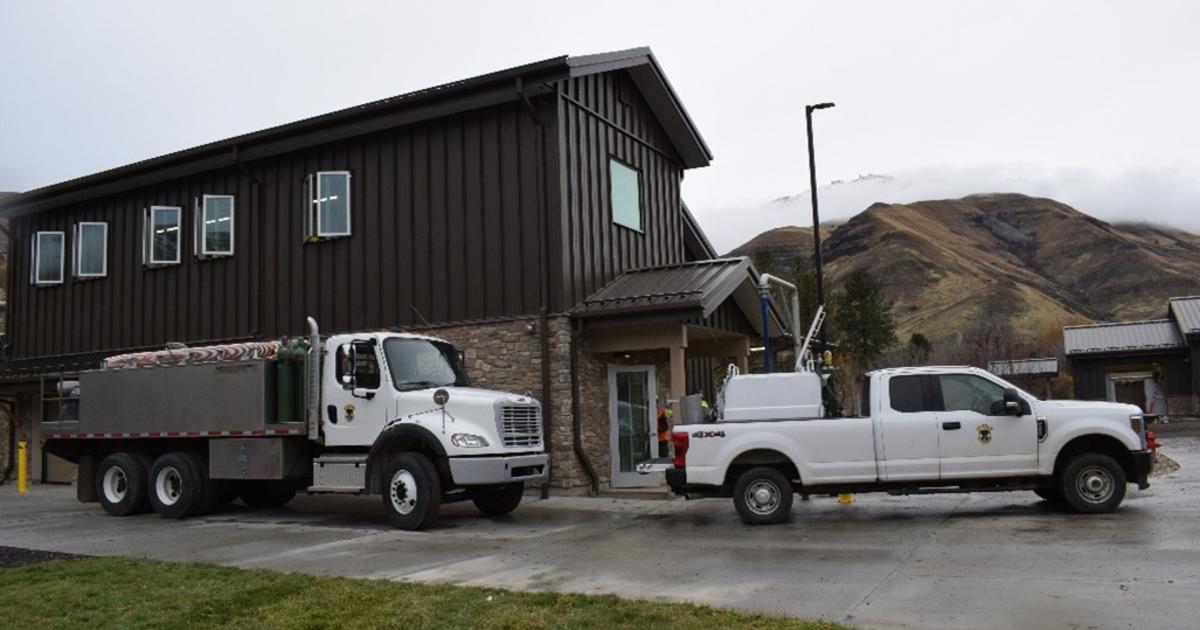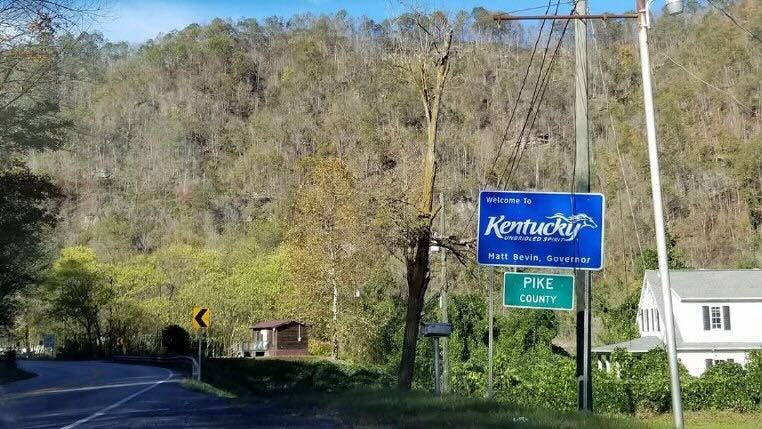A battle is brewing over the last vacant property on California’s scenic Stinson Beach – over a property owner’s right to build a summer home near his house in a stretch surrounded by vacation homes.
The permit application was placed more than nine years ago by Brian Johnson, 65, who is seeking to build a two-story, 1,488-square-foot house on an unoccupied plot at 21 Calle del Onda.
The plot is part of the property, which has been in his family for nearly nine decades.
The project also calls for a 288-square-foot detached garage and a new septic system on the lot, which measures in at 15,200 square feet. The summer home itself, drafts from Johnson show, would be one-story and measure at 1,296-square-feet.
Several members of the Marin County Planning Commission, however, have aired qualms with Johnson’s proposal, citing increasing risk of sea level rise and efforts to protect the coastal environment.
The permit application was placed more than nine years ago by Brian Johnson, 65, who is seeking to build a two-story, 1,488-square-foot house on an unoccupied plot at 21 Calle del Onda in California’s famously affluent Stinson Beach

The project also calls for a 288-square-foot detached garage and a new septic system on the lot, which measures in at 15,200 square feet. The summer home itself, drafts from Johson show, would be one-story and measure at 1,296-square-feet
Among those to take issue with the installation is Don Dickenson, who voted against the home’s construction at an August meeting called to address the still-in-limbo project.
There, he told other members – most of whom eventually agreed with his assessment – how approving the home would be provide ‘significant potential precedent-setting implications’, due to the coast quickly losing ground to storms and erosion.
‘This is an environment that is changing,’ explained Dickenson at the meeting – the most recent called to address the hotly debated proposal.
‘Maybe it’s changing more rapidly than some people thought.’
The comment echoed concerns aired by activists in the famously affluent area, who argue that building a home atop a sand dune on the same beach where the county is mulling a $50million state-funded dune restoration project sets a poor precedent.
Groups to air such concerns include the Marin chapter of conservation group Surfrider Foundation, leading Dickenson and other members of the committee over the summer to vote against the project.
However, the committee of seven residents still voted to pass the project – spurring an appeal from two of Johnson’s neighbors.
That appeal is set to be voted on by the separate Marin County Board of Supervisors Tuesday – where a rejection will likely spur another appeal to the California Coastal Commission.
While not specified, the issues the two unnamed neighbors have with the prospective property likely stem from the aforementioned apprehension aired by climate activists, as well as an unsaid desire for Johnson to respect the property rights of others along the beach.

Several embers of the Marin County Planning Commission have aired qualms with Johnson’s proposal, citing increasing risk of sea level rise and efforts to protect the coastal environment. The seven person board, however, still voted to pass the project after several years over the summer – leading to an appeal from two neighbors

Among those to take issue with the installation is Don Dickenson, who voted against the home’s construction at an August meeting called to address the still-in-limbo project. There, he told other members how approving the home would be provide ‘significant potential precedent-setting implications’, due to the coast quickly losing ground to storms and erosion

The comment echoed concerns aired by activists in the famously affluent area, who argue that building a home atop a sand dune on the same beach where the county is mulling a $50million state-funded dune restoration project sets a poor precedent

Famed for its white sands and status as a state-sanctioned recreation area where opportunities for hiking, fishing, and surfing are abound, the 3.5mile beach is an icon in California, and is located across the bay and Golden Gate from San Francisco
Famed for its white sands and status as a state-sanctioned recreation area where opportunities for hiking, fishing, and surfing are abound, the beach is an icon in California, and is located across the bay and Golden Gate from San Francisco.
The 540-square-foot property partially owned by Johnson at 21 Calle Del Onda is no different.
A quaint, prewar cottage, it was purchased by Johnson’s grandparents in 1935 as a posh getaway from their daily digs in Sacramento, along with three parcels of land that surrounds it.
The home has stayed in the family since, but as mentioned by both the commission and other detractors, conditions in the area have changed a great deal since.
Speaking to the San Francisco Chronicle Sunday, Scott Tye, vice chair of the Marin chapter of the conservation group Surfrider Foundation, explained how these changes play a part in the years of hesitance to finally approve the project.
Tye, who has opposed development on the site since 2014, told the paper: ‘The [California] Coastal Act says you don’t sacrifice important natural habitat for the development of the property for a commercial residential structure.’

He said he and his relatives hope to use the house themselves, while possibly renting it out for some extra cash

Speaking to the Chronicle ahead of the commission’s upcoming meeting to address the appeals, he also cited how his proposal has passed multiple environmental reviews required by the county and state
Citing the fact that there are almost no such residences left due to heightening climate concerns, he added: ‘Particularly if it’s one of the few left standing.’
Johnson, however, argues that he and his relatives – including 92-year-old Colette Combs – only plan to build on the site of a previously existing house, and that the commercial designation is merely in name because his plans for the property.
Speaking to the Chronicle ahead of the commission’s upcoming meeting to address the appeals, he also cited how his proposal has passed multiple environmental reviews required by the county and state, while spending $335,000 in the process.
‘It’s not like we’re building an oil refinery or a nuclear power plant on the coast,’ said Johnson, who is the home’s majority owner, and shares partial ownership with his grandparents’ sole-surviving daughter in Combs.
‘I’m the last of the Mohicans,’ the elderly woman told the Chronicle last week, during a visit to the historic residence.
Steve Kinsey, a consultant representing the owners, questioned why the now-approved project for nearly a decade has being singled out,
A former chair of the California Coastal Commission who also served as a Marin County supervisor, he pointed to other homes that have been built atop another waning sand dune on the 3.5mile beach that used to stretch to the Bolinas Lagoon.

He filed the application more than two years ago, spending $335,000 in the process
Holding a photo from the 1940s that shows multiple houses littered along the beach, he beseeched the Chronicle: ‘Why does this last 80 feet have to be treated differently?’ he said.
Officials, however, have shot back how several Stinson Beach homes were swept out to sea as recently as 1982, including one property on Johnson’s street.
Similar storms, they say, are expected to be more of a common occurrence as the years progress and the affects of climate change continues – despite several homes on the property recently being listed for sale and put on AirBnb, often with astronomical price tags.
Johnson, however, has remained steadfast in his quest while remaining unconvinced, telling the Chronicle of those concerns: ‘Who’s to say?’
He answered the rhetorical question himself, on behalf of four other relatives who are part owners.

Officials, however, have shot back how several Stinson Beach homes were swept out to sea as recently as 1982, including one property on Johnson’s street. The board is set to vote on the two appeals on Tuesday
‘I’m saying build it and let me enjoy it. I’m 65 years old.’ He said he and his relatives hope to use the house themselves, while possibly renting it out for some extra cash.
Citing similar listings on the beach by online marketplace VVRBO, he told the paper ‘I got these VRBOs all around me, and they’re selling my view.’
Combs, meanwhile, who isn’t sure she will live to see the new installment, said he has hope the debate will finally be put to bed in the coming day.
Of the home – which is Johnson’s vacation home from his permanent residence at Lake Tahoe – she told the paper: ‘Couldn’t ask for a better location.’
The board is set to vote on the two appeals on Tuesday.
























/cdn.vox-cdn.com/uploads/chorus_asset/file/24924653/236780_Google_AntiTrust_Trial_Custom_Art_CVirginia__0003_1.png)
/cdn.vox-cdn.com/uploads/chorus_asset/file/25672934/Metaphor_Key_Art_Horizontal.png)



/cdn.vox-cdn.com/uploads/chorus_asset/file/24982514/Quest_3_dock.jpg)

